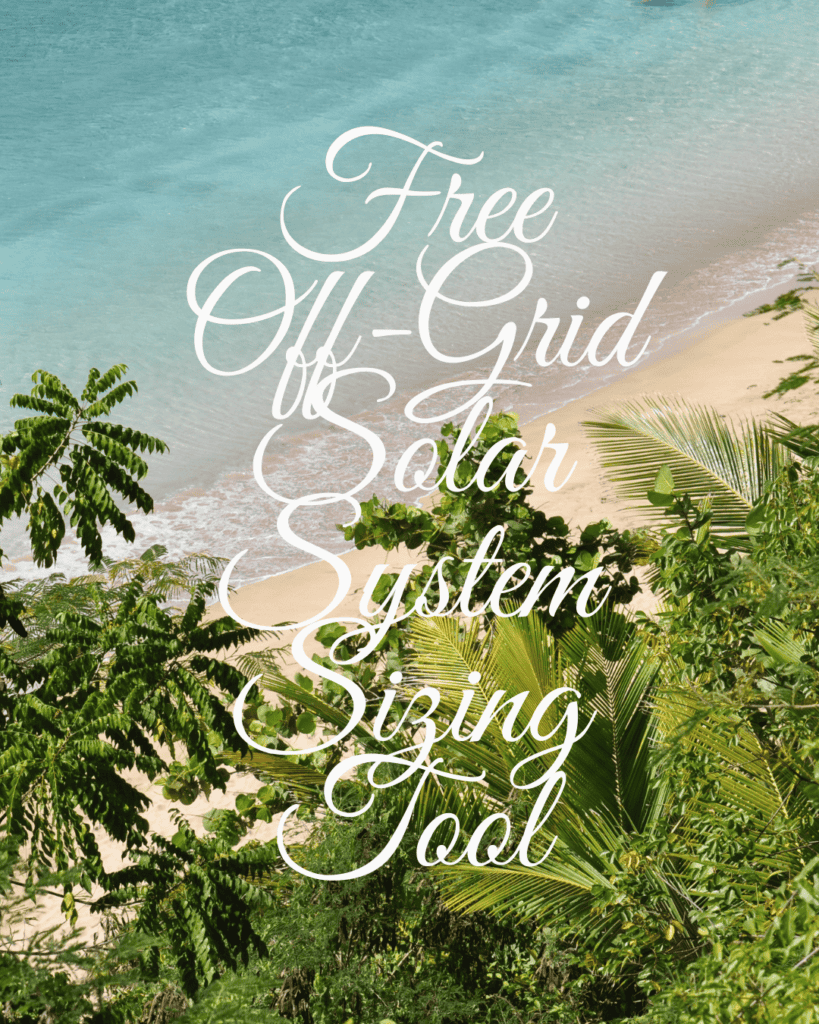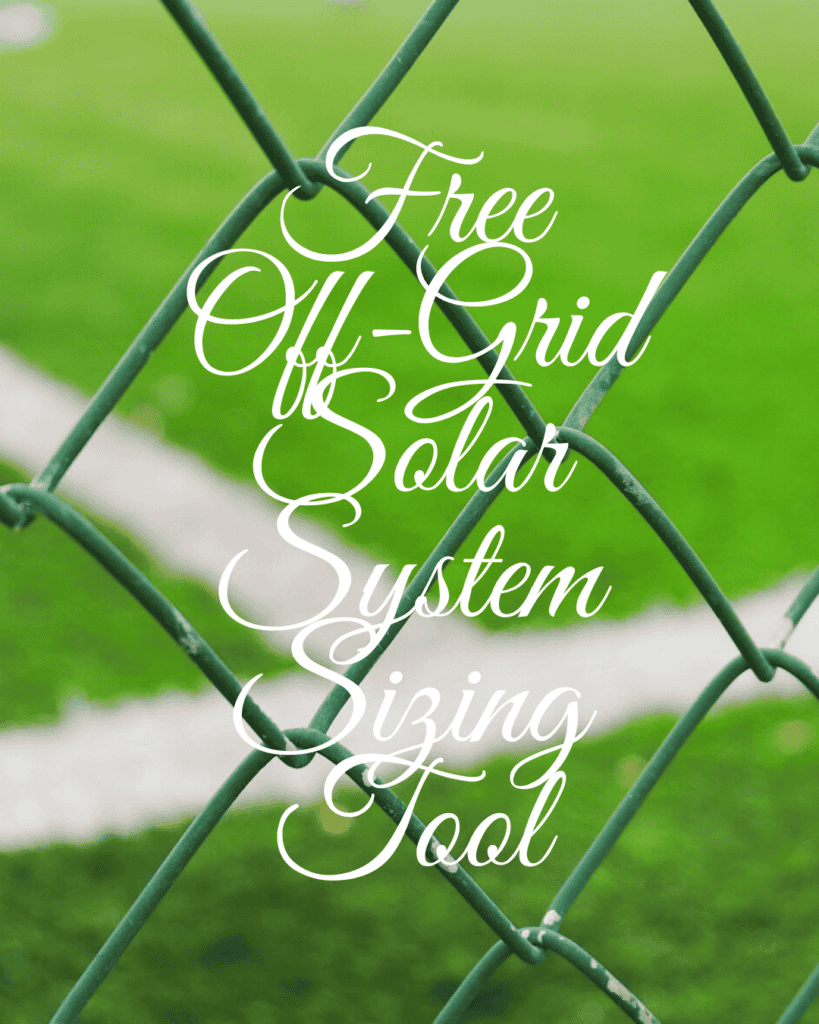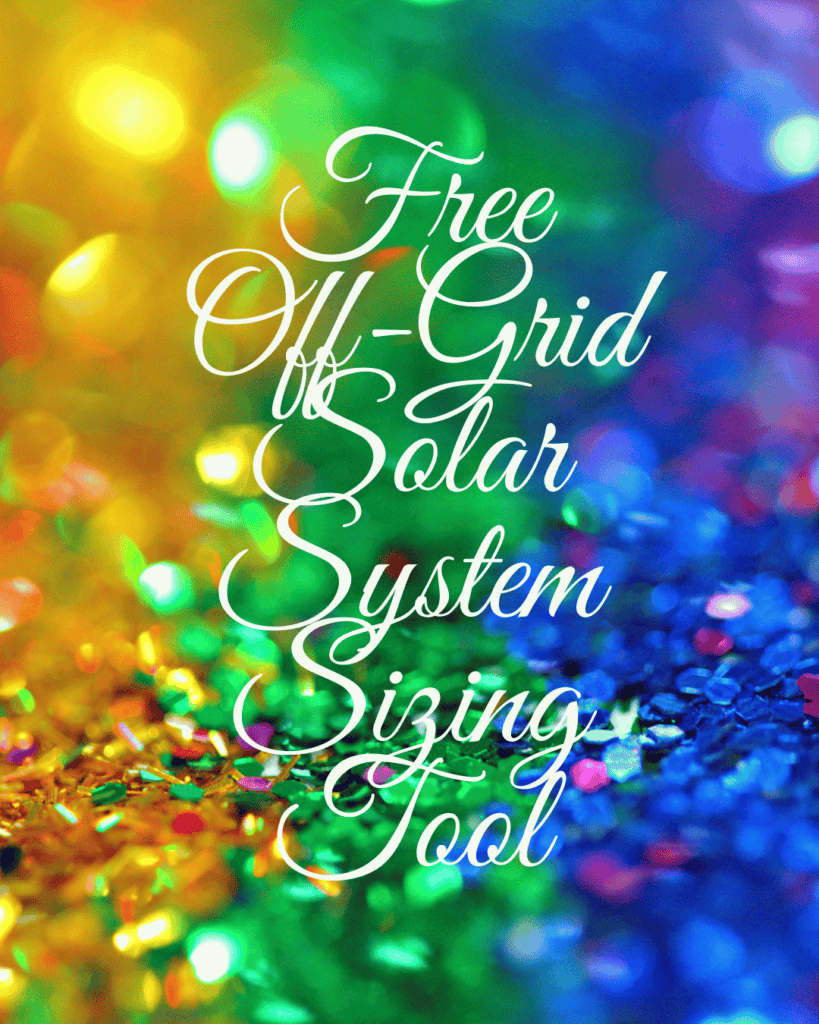Free Off-Grid Solar System Sizing Tool
If you want to live off-grid with solar, a system must meet both your daily energy needs as well as provide power for evening use and emergencies. Begin by calculating your average daily consumption plus any peak usage peaks.

Consider future energy plans when creating an effective system – for example replacing gas appliances or switching to an electric vehicle (EV). Doing this can ensure that it continues meeting your needs well into the future.
Calculate Your Energy Needs
Solar panels convert sunlight into direct current (DC) electricity, which can then either be stored for future consumption or fed back into the grid for immediate consumption. Your energy requirements determine the size and shape of your solar power system; so it’s crucial that you take time and care when selecting one for home use.
Finding out your average electricity usage is relatively straightforward: all it takes is looking at your past 12 monthly energy bills and adding up total household electricity consumption in kilowatt hours. Seasonal variations in electricity usage could affect how much power a solar system needs to provide for you.
Once you have an accurate view of your average daily electricity consumption, our off-grid solar calculator can assist in estimating an appropriate size solar array and battery storage system. Simply select which appliances are being measured from the drop-down list before entering quantities for each appliance – our off-grid solar calculator will then populate their average watts per hour automatically! Finally, choose how long autonomy should last before needing utility power again.
The recommended system size takes into account several key assumptions, such as an 85% solar system efficiency rating, three percent cable losses and eighty percent battery bank efficiency rating. Note that these values are approximate; they may change depending on several factors, including weather patterns, region and appliance type.
At this point, it’s also important to account for “phantom loads”, or appliances that draw small amounts of power without being noticed by you. Examples include TVs, computers, refrigerators and lights – they account for up to 20% of total energy usage! Luckily, these “phantom loads” can easily be eliminated by simply adding a switch to your power center or using smart plugs which automatically turn off devices when they are no longer necessary.
At the core, selecting an energy system that meets both daily and emergency demands requires speaking to an energy professional before making any definitive decisions about your home’s energy system.
Determine Your Roof’s Pitch
Your roof’s slope can have a dramatic effect on how much solar power you produce, so ideally mount panels at a slight tilt towards the south for maximum effect. A 15-degree tilt typically suffices and helps protect them from dust, leaves and snow accumulation.
Steep roofs typically produce less solar output, yet are still suitable for solar. Installation crews must sometimes use scaffolding or rent additional equipment in order to work on them safely and successfully.
Installers typically favor roof pitches of 40-45 degrees as this helps them produce the maximum electricity per panel and derive maximum financial benefit from your system.
Many homeowners mistakenly believe their rooftops don’t make good candidates for solar because they lack the optimal south-facing angle or slope; however, that doesn’t have to be true; in fact, solar usually makes sense even if mounted east-west or north-south and as long as there’s sufficient sun available for generation.
Rooftop solar calculators can assist in estimating what size solar energy system will best meet your home’s energy needs and how many panels will fit on its roof. In addition, such tools as PVWatts take into account various site factors to provide an accurate assessment of how much power will be produced from solar.
In order to measure your roof’s slope, simply use either a level or smartphone with a compass app to place it flat on the area where you plan on mounting solar panels and read off the degree angle displayed on your phone screen; that is your roof pitch. For an uneven roof, try placing multiple levels along the slope before taking an average reading – the tool will account for unevenness along with other site characteristics for an accurate, tailored estimate of solar potential.
Determine Your Battery Capacity
Solar battery storage brings an exciting new level of functionality to off-grid solar systems by enabling users to store surplus energy for use during periods without sun. Sizing an adequate battery for this purpose requires having a comprehensive understanding of your electricity consumption patterns and rates – accurate sizing is critical for optimal system performance and cost effectiveness.

Use the Off-Grid Solar System Sizing Tool to get an estimate of how big of a battery bank you require to power your home off-grid. Simply select all of your typical appliances, enter their average wattage and duration of use into the calculator, and let it do its magic to estimate your total power demand in Watt-Hours (Wh).
Next, choose the roof pitch and location of your off-grid site before selecting either an AC-coupled or DC-coupled system. AC-coupled systems feature separate inverters for your solar panels and battery while DC-coupled systems share one single inverter; both options offer advantages depending on your energy needs, budget constraints, and available space.
Select your desired “Days of Autonomy,” which refers to how long your solar battery system can operate without solar energy input from an additional source – especially helpful when located in regions with extended cloudy or rainy spells. Once this information has been input into the calculator, it will calculate your minimum capacity requirements based on energy consumption pattern and local weather conditions.
By correctly sizing your battery, you can ensure it has enough capacity to provide backup power during grid outages and load shifting at peak times – potentially leading to significant savings over time in utility rates.
In other instances, you might prefer an off-grid solar system; in such an instance, large battery capacity will be necessary in order to offset all your annual power usage. Although full zero net metering might seem ideal in theory, in reality you may still require purchasing power during peak hours from the grid.
Determine Your Solar Goals
Solar energy can be an investment, so it is wise to set goals before selecting a system. Doing so ensures that it fits with your future power needs as efficiently as possible – one way of doing this would be using a solar calculator, which estimates how many panels will be necessary.
A solar system of appropriate size depends on both your electricity usage and amount of available sunlight in your location. As more energy is consumed, more panels may be required to produce sufficient power; however if you can reduce electricity usage you could possibly decrease this requirement.
Most solar system sizing tools will require you to provide information about your average electricity usage in kilowatt-hours (kWh). This data can either come directly from utility bills or can be estimated by the tool; typically, more accurate usage information yields more precise results; using your utility bill data can account for seasonal variations such as an increased air conditioning usage in summer months.
Many solar calculators will also take into account your future energy plans, such as switching over to electric appliances or purchasing an EV, in order to help plan for any changes in energy consumption and anticipate the need for a larger solar energy system. While expanding an existing solar energy system later can increase upfront costs and decrease long-term savings.
Although most solar systems will remain connected to the grid, some people choose to go off-grid by adding home batteries. An off-grid system functions similarly to a self-sufficient energy island in that it generates, stores, and uses its own electricity without tapping into traditional power grids for supply. While off-grid planning may sound challenging at first, its implementation does not need to be daunting! Sizing an off-grid system correctly takes additional energy planning steps than what may be necessary when going grid-tied.

When designing an off-grid solar system, it is critical that its size be calculated based on peak power rather than average daily usage. This is because appliances and devices that use energy at once may drain your battery quickly leading to overcharging and reduced battery lifespan.
